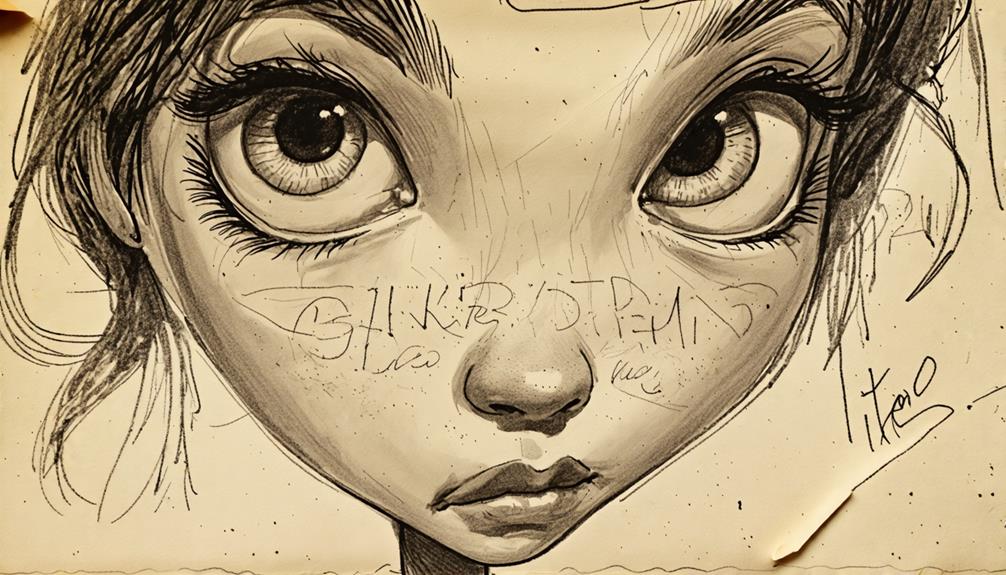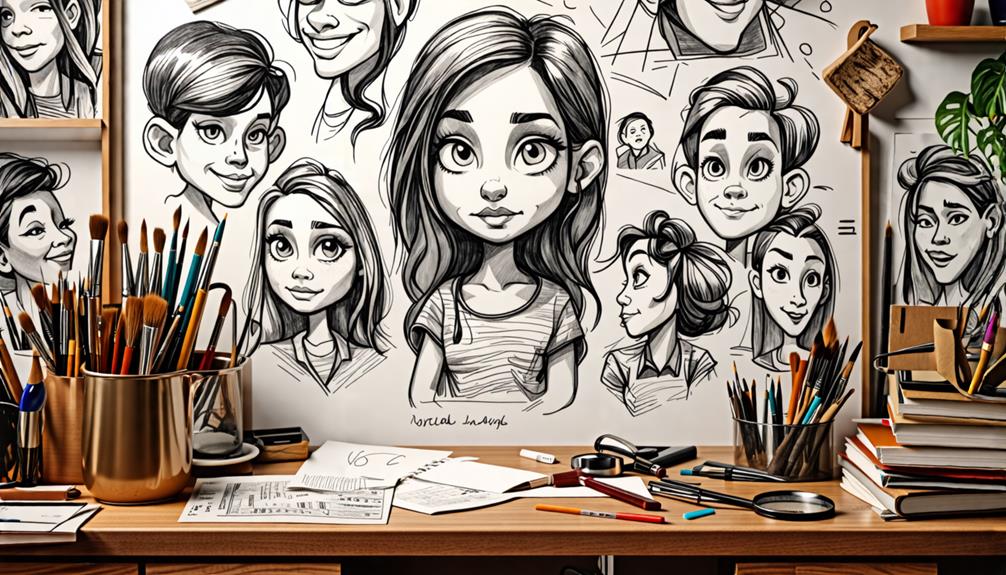You've likely seen Al Hirschfeld's iconic caricatures, but did you know there's more to them than meets the eye? For decades, this celebrated artist embedded a secret within his illustrations – his daughter's name, 'NINA.' What began as a personal tribute evolved into a cultural phenomenon, enchanting audiences and transforming his artwork into an interactive experience. This clever game not only showcased Hirschfeld's wit but also created a unique bond between the artist and his admirers. As you explore this intriguing aspect of his work, you'll discover how a simple hidden signature became a beloved tradition that continues to charm art enthusiasts today.
Key Takeaways
- Al Hirschfeld hid his daughter's name, 'NINA', in his caricatures for decades, starting in 1945.
- The tradition began with the Broadway show 'Are You With It?' and became a weekly feature in The New York Times.
- Hirschfeld concealed 'NINA' in various elements of his drawings, including folds, hairdos, and backgrounds.
- The hidden 'NINA' game became a cultural sensation, engaging families in a Sunday morning treasure hunt.
The Birth of a Hidden Signature

In 1945, renowned caricaturist Al Hirschfeld began a charming tradition that would captivate readers for decades to come: hiding his daughter's name, 'NINA', in his intricate drawings. This playful game coincided with Nina's birth, starting with the Broadway show 'Are You With It?' Hirschfeld cleverly concealed the name in folds, hairdos, and backgrounds, challenging New York Times readers to spot it.
As the tradition grew, so did its complexity. You'd find yourself enthusiastically scanning Hirschfeld's drawings on Sunday mornings, searching for the elusive 'NINA'. The game became a national phenomenon, engaging multiple generations in a weekly treasure hunt.
What started as a father's tribute to his newborn daughter evolved into a beloved ritual, transforming Hirschfeld's caricatures into interactive works of art. The first appearance of 'NINA' set the stage for years of hidden surprises in his drawings.
NINA: A Cultural Phenomenon
How did a simple name hidden in caricatures become a cultural sensation that spanned generations? Al Hirschfeld's playful inclusion of 'NINA' in his New York Times drawings transformed into a nationwide phenomenon.
Families enthusiastically anticipated Sunday mornings, turning the search for hidden names into a cherished game. As audience engagement grew, so did the complexity of Hirschfeld's concealment, with some illustrations featuring up to 60 NINAs.
This tradition became a rite of passage, connecting viewers to Broadway culture and fostering a sense of nostalgia. The NINA game enhanced interaction between Hirschfeld and his audience, contributing considerably to his artistic legacy.
Legacy of Artistic Playfulness

Al Hirschfeld's clever incorporation of 'NINA' into his caricatures created a lasting legacy of artistic playfulness that transcended mere illustration. His ingenious game transformed the way you engage with art, turning New York Times readers into enthusiastic detectives.
As you scoured his drawings for NINA, you weren't just observing; you were participating in a beloved tradition that connected generations of families to Broadway culture. This playful ritual became an integral part of Hirschfeld's artistic identity, making NINA synonymous with his distinctive style.
As the challenge evolved, with multiple NINAs hidden in increasingly intricate details, you found yourself more deeply invested in each new piece. The legacy of this game extends beyond the art world, fostering a sense of nostalgia and community among those who spent Sunday mornings hunting for NINA in Hirschfeld's masterful caricatures.
Conclusion
You've discovered a delightful secret hidden in plain sight.
Al Hirschfeld's playful inclusion of 'NINA' in his illustrations isn't just a father's love letter; it's an invitation to engage with art.
As you search for those elusive letters, you're part of a decades-long tradition that's brought joy to countless readers.
Hirschfeld's legacy lives on, reminding you that sometimes, the most enchanting art is the kind that makes you look twice.

Leave a Reply